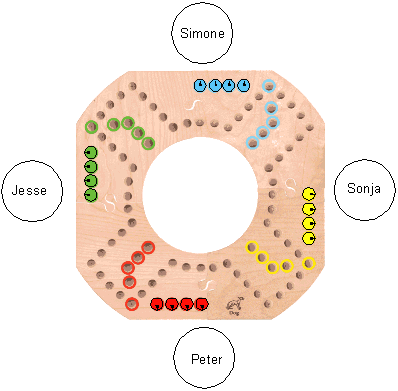
The first team with all marbles lined up in the goal wins.
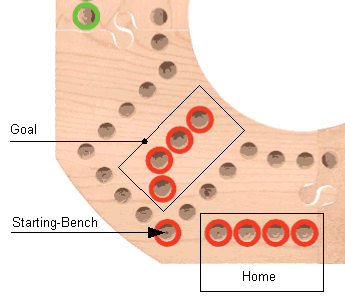
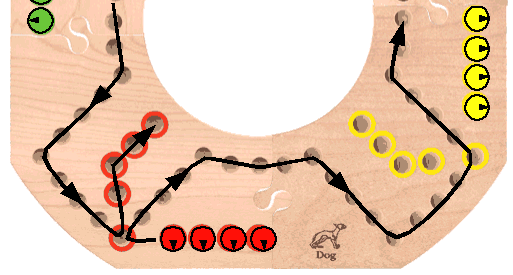
Each player passes one card face down to his team mate. A player may not look at the card passed to him until he himself has passed a card away to his team mate.
The game begins.
2.) Sonja plays a king and also moves a marble to her starting-bench..
3.) Simone has neither an ace, a king nor a joker. She can not move and must put all her 6 cards into the pool.
4.) Jesse plays an ace and leaves home.
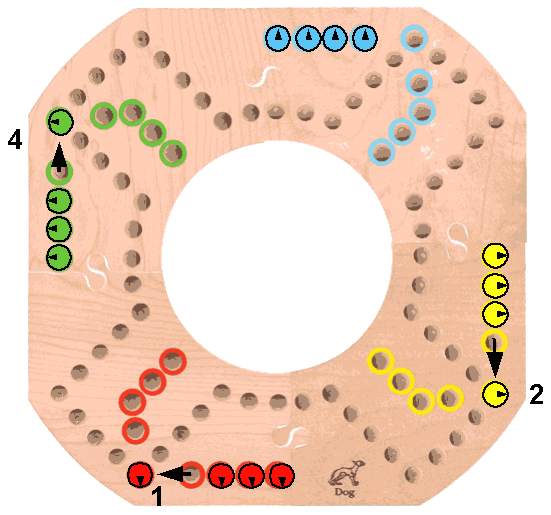
2.) Sonja plays a 4. A 4 may be used to move either forward or backward. Sonja moves her marble 4 steps backward. That puts her just 5 steps away from her goal saving her from having to go all around the board..
3.) Jesse plays an 8.
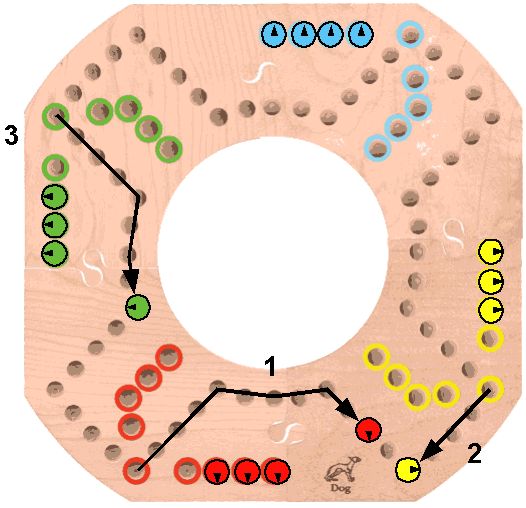
2.) Sonja plays a 6 and moves her marble into her goal.
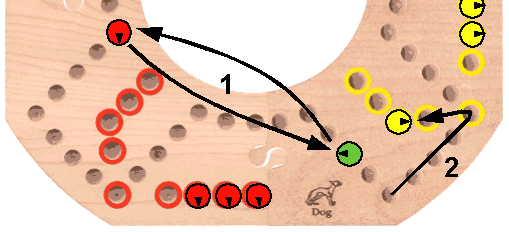
2.) Peter plays a queen. That fits precisely.
3.) Sonja plays an ace and starts a new marble.
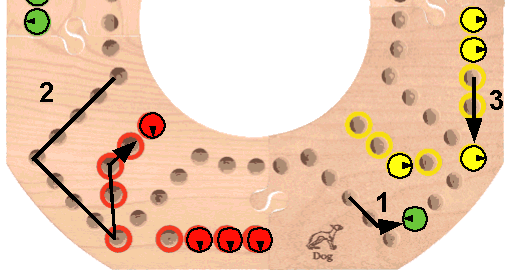
Note: Sonja's marble on her starting-bench also blocks her own marbles from passing.
Note: A marble only blocks other marbles when it has been moved from home onto the starting-bench. It does not block if it has been moved to the starting-bench from anywhere else. Then other marbles may pass it; or they may hit it and send it home as they can do with any other marble too.
2.) Sonja plays a 4 and choses to move backward.
3.) Peter plays a king and starts a new marble.
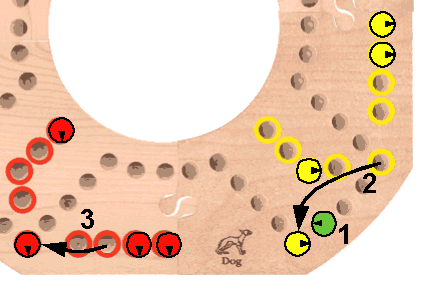
1b) She uses the remaining 5 moves for her other marble driving it into her goal. Jesse's green marble is hit and sent home. (Sonja has unbelievably good cards!)
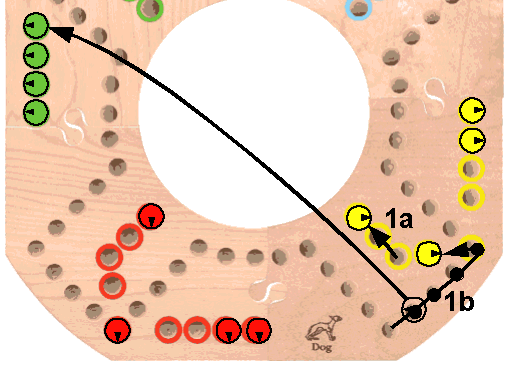
After every deal team mates exchange a card.
Note the following special situations:
- If he plays his 2, he can hit Sonja's marble (yellow) and send her home.
- If he plays his 5 he passes Sonja's marble without sending it home.
- If he plays his 7, then he must move 7 single moves. He therefore hits Sonja's marble and sends it home.
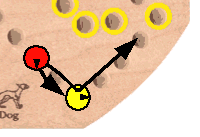
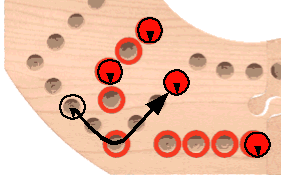
Note:
- A 4 may not be used to move backward into the goal.
- A 4 may be used to move backward to the starting-bench in order to use the next card to move into the goal.
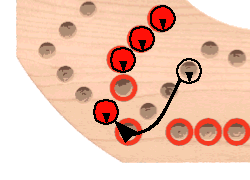
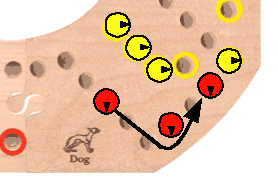
Note: A card may only be used if all its steps can be moved. If Peter had not been able to finish his move with Simone's marble then he would not have been able to use the card.
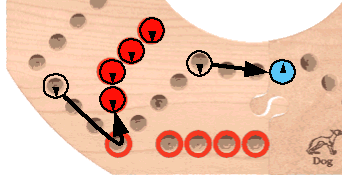
Note: A team's finishing move (moving the 8th and last remaining marble into the goal) may not be achieved by using a Joker.
Tip: Remember the face of the card that you gave to your team mate. Try to save the card you received until your last move into the goal. Your team mate will prepare your last move since he knows which card you have in your hand. Example: Peter knows that Simone has kept the 4 he gave her. So he can play a Joker and move 4 steps close of the goal.
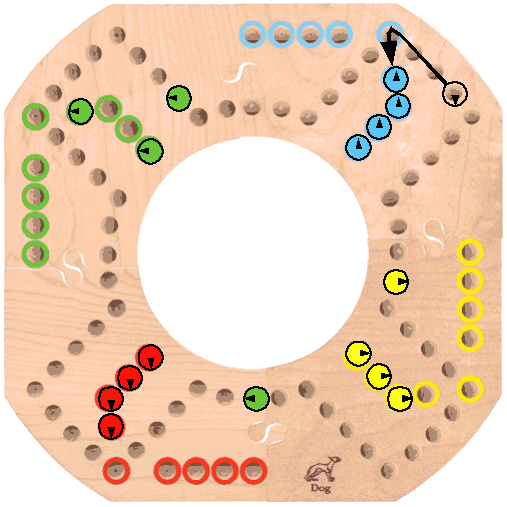
- Team mates may not discuss their strategy. Expressions such as "why not play a 4" or "Remember the card I gave you..." are not allowed.